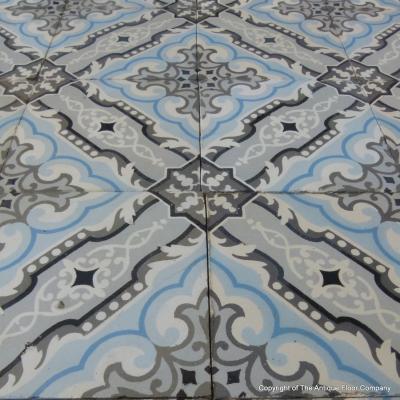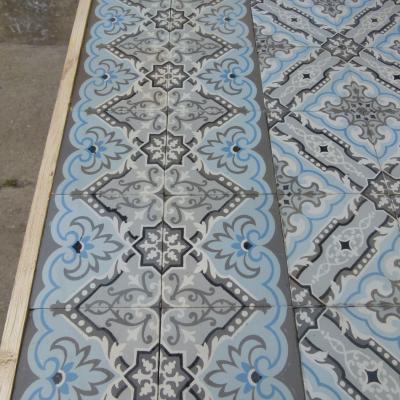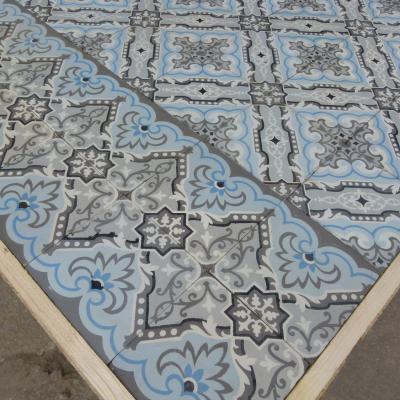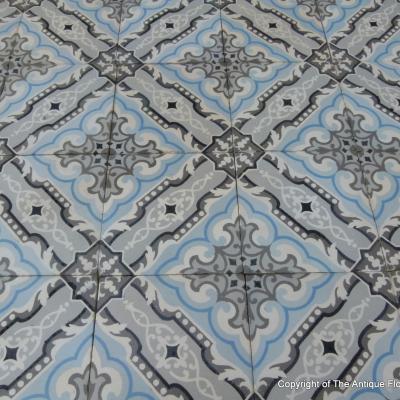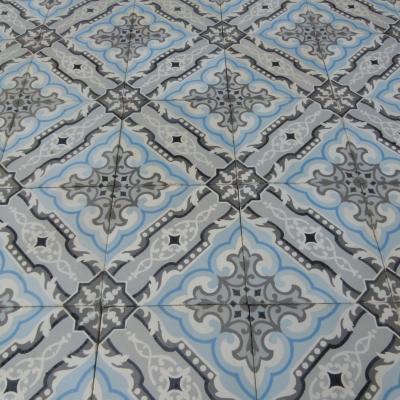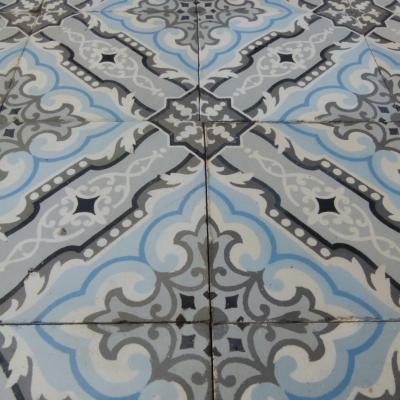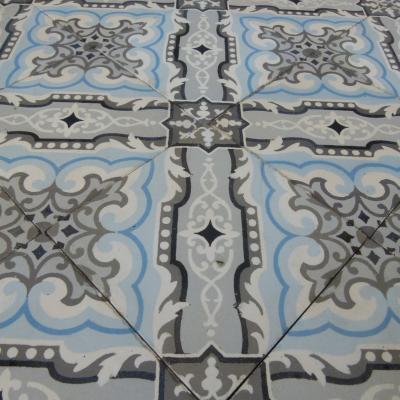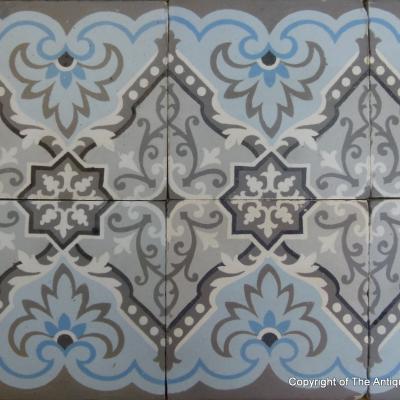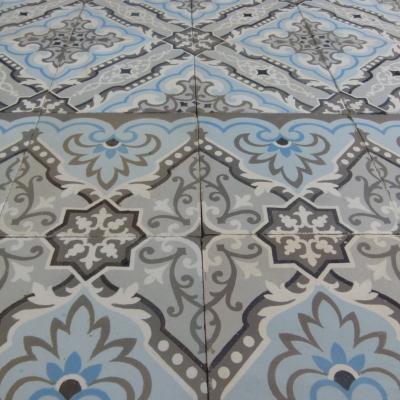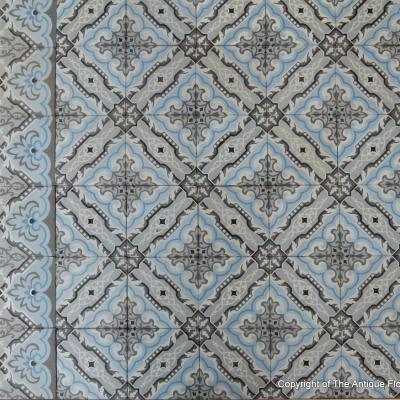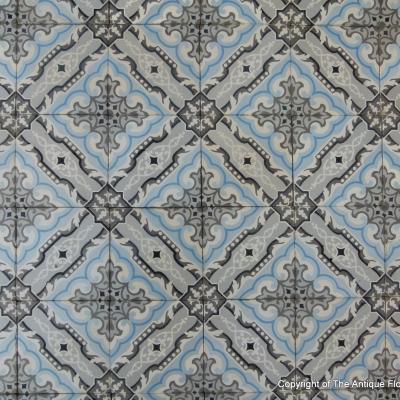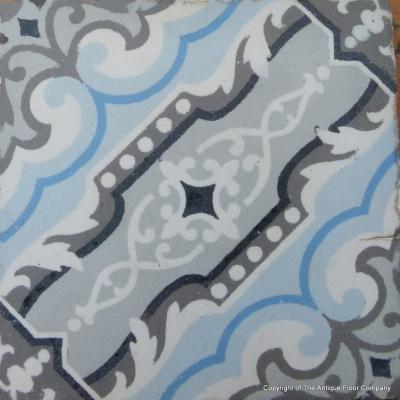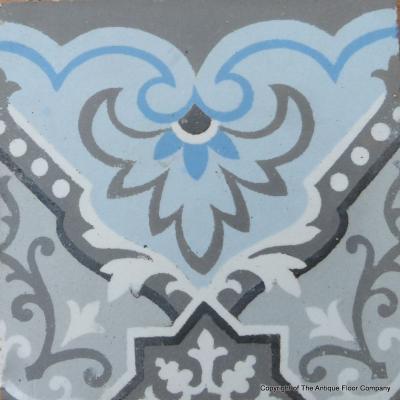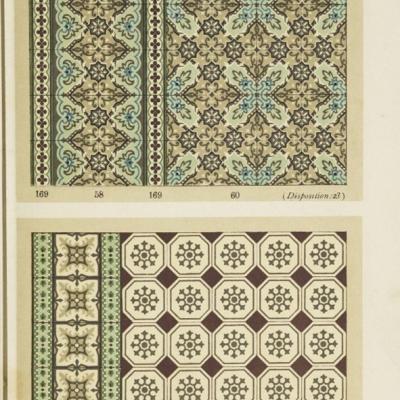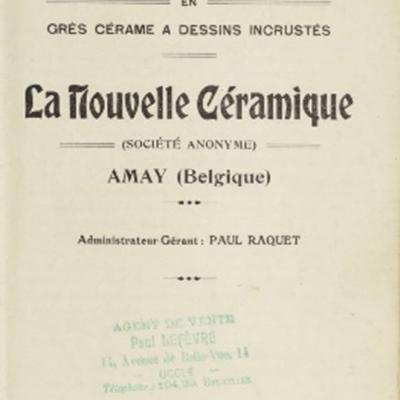11m2 / 118 sq ft Belgian ceramic - early 20th century
In a cool and enduring palette of sky blue, charcoal, grey, and white, this evocative early 20th-century ceramic floor was produced by Produits Céramiques Société Anonyme, AMAY—a ceramic house active during the final flowering of Belgian industrial design, when the region’s tile-makers were at the forefront of both technological innovation and aesthetic refinement. The company, like its contemporaries in Saint-Ghislain and La Louvière, built upon the mid-19th-century Belgian legacy of high-fired ceramics, combining traditional encaustic techniques with a growing appetite for stylised geometric ornament, spurred on by the influence of Art Nouveau and later, the nascent Art Deco.
The 14cm / 5.5 inch square field and border tiles— carefully reclaimed and now professionally restored—exemplify this transitional period in European decorative arts. The flexibility of excellent design allows for the border tiles to be laid singularly or in duplicate for dramatic effect, configurational freedom that speaks to the changing tastes of interiors. A page from the original manufacturer’s period catalogue, presenting the tiles, is included in the gallery, bearing witness to the precise historical patrimony of the floor.
Each tile boasts a deep slip and measures a robust 15mm / 0.6 inches thick, fired at temperatures above 1,000F degrees—a standard of durability pursued by Belgian makers to meet both domestic and export demand. Occasional groutable small chips and edge nibbles on a few tiles reflect their century of use and add to the floors charm. Suitable for installation both indoors and out, they will perform efficiently with underfloor heating systems, allowing their aesthetic legacy to live comfortably in modern settings.
We’ve photographed a 1.2m2 / 13 sq ft section of the floor, with the tiles taken at random so they are reflective of the whole floor.
This is the second time in 17 years of trading that we have recovered this floor and the first one found its way into a wet room in Perth, Australia. We were delighted to receive photos back from our client after the impressive installation. Proof, perhaps, that great design knows no borders—only the pleasure of revival. A link to their installation can be found by clicking here
Tile quantities:-
FIELD tiles - 430 - 8.4m2 / 91 sq ft.
LARGE BORDER tiles - 130 plus 3 corners* - 2.6m2 / 28 sq ft. - 18.6 linear metres / 61 linear feet**.
* We have recovered 3 of the 8 border corners required for a back-to-back framing of the floor. The others can easily be mitre cut from regular borders.
** Halve the linear lengths for a double back-to-back lay as shown in the gallery.
NOTE Antique tiles were most commonly made in single or two tile moulds. Before current computer automation methods their moulds were made by hand and the colour slips mixed by eye. Kiln temperatures could also be variable, as could the firing time. The result is that tiles often display subtle size and thickness variations and there can be tonal variations in colours, owing to the slip mixing and/or firing time. All of this makes these handmade tiles unique and adds to their charm. Some floors display their subtle variations in size and tones, some not, but when photographing we always take a random section of the floor so that it is representative of the whole. A tiler should always dry lay a section of the tiles to familiarise himself with them before starting to fix lay.
CL151



